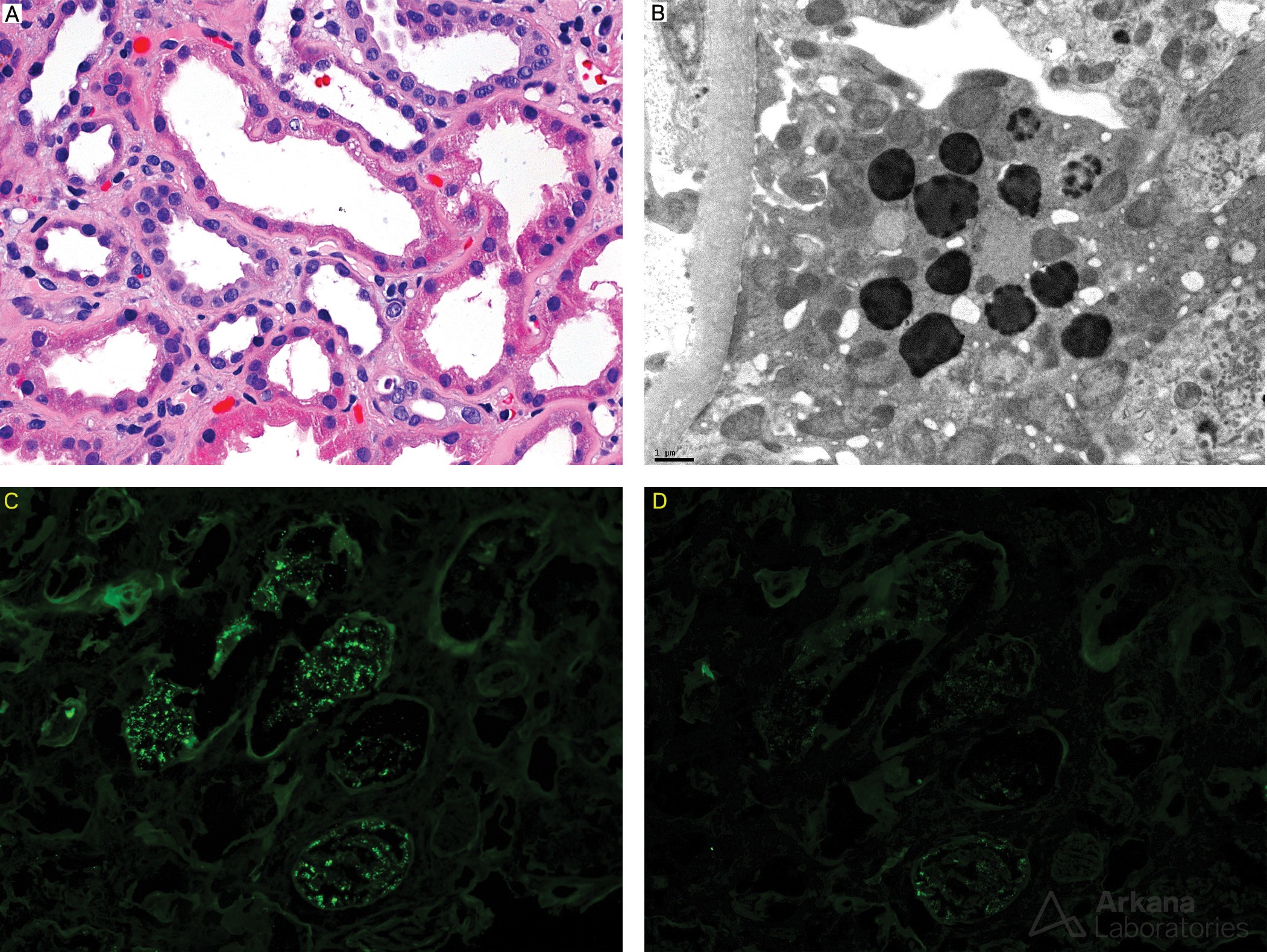The two most common morphologic variants of light chain proximal tubulopathy (LCPT) are LCPT with and without crystal formation. The histopathologic features of light chain proximal tubulopathy without crystal formation are shown here. (A) The tubular epithelium in this case shows evidence of acute tubular injury with reactive nuclei and cytoplasmic thinning (hematoxylin and eosin; original magnification × 400). (B) Transmission electron photomicrograph of proximal tubule cytoplasm showing lysosomes with an irregular mottled appearance and no evidence of crystal formation (unstained; original magnification × 20,000). (C and D) Serial sections stained with λ (C) and Κ (D) shows strong staining for λ in the proximal tubules with weak to no staining by Κ (direct immunofluorescence; original magnification × 200).
The significance of light chain proximal tubulopathy without crystal formation is debatable. Specifically, whether the findings shown here represent a true lesion or simply a physiologic process in the setting of excess free light chains. This is an important distinction considering the fact that end organ damage is frequently used in treatment algorithms for plasma cell dyscrasia. If this is merely a physiologic process in the setting of excess free light chains then this is best considered a coincidental finding and not an indication for treatment of the plasma cell dyscrasia. Alternatively, if this is determined to be a lesion resulting from the presence of excessive and aberrant free light chains, treatment of the underlying plasma cell dyscrasia is warranted in many cases based on this finding.
There are cases with these findings in which there is normal renal function and little evidence of tubular injury which likely represent this “physiologic trafficking”. However, there is also evidence to support the fact that excess free light chains have toxic effects on proximal tubules. More work is needed to that could be used to guide the significance of the finding of proximal tubule light chain restriction without crystal formation. For now, careful clinicopathologic correlation is required to determine the significance of this finding.
Quick note: This post is to be used for informational purposes only and does not constitute medical or health advice. Each person should consult their own doctor with respect to matters referenced. Arkana Laboratories assumes no liability for actions taken in reliance upon the information contained herein.



